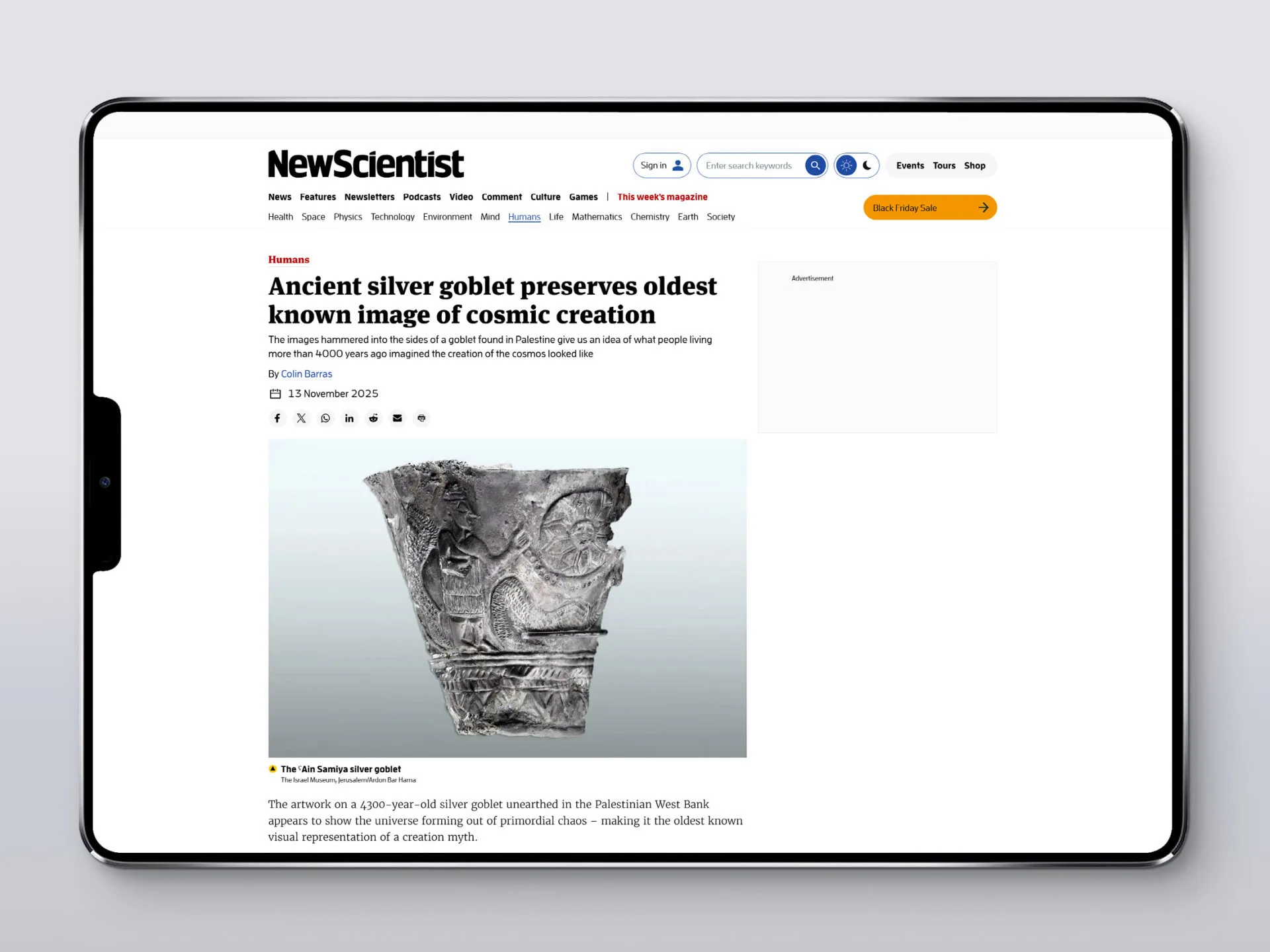Three articles on the reinterpretation of the decorations on the 4,300-year-old silver goblet from ˁAin Samiya – and their implications for understanding cosmological concepts in the Ancient Near East –, published by the Luwian Studies Foundation on 13 November 2025, have triggered a wave of international media interest. Within 48 hours of publication, the claim that the goblet may feature the oldest known visual representation of the creation of the cosmos was reported across a wide spectrum of global outlets – ranging from leading science magazines and national newspapers to regional news sites and archaeology blogs in more than a dozen languages.
Initial reports appeared in New Scientist, Smithsonian Magazine, The Telegraph, and The Times of Israel, quickly followed by detailed write-ups in Aurora Israel (Spanish), Arkeolojik Haber (Türkiye), Greek Reporter, La Brújula Verde (Spain), IFLScience, NewsBytes India, and Arabic-language sites such as Beiruttime-LB. The story was also amplified through international aggregators such as Yahoo News and AOL. The widespread coverage focused on the newly proposed interpretation of the cup’s iconography: a sequence showing a primordial state of chaos followed by a “boat of light” lifting the sun into an ordered cosmos.
A particularly elegant summary came from Greek Reporter: “After more than fifty years of debate, the new interpretation offers the strongest explanation yet. The small silver cup, once viewed as an unsolved archaeological mystery, now appears to record one of the earliest attempts to map the cosmos – a concise and sophisticated expression of how ancient people imagined the world taking shape.”
The news also generated robust discussion across social media platforms and archaeology forums. Numerous scholars and science communicators shared their reactions, often emphasizing the potential significance of the find while encouraging critical assessment of its interpretation.

